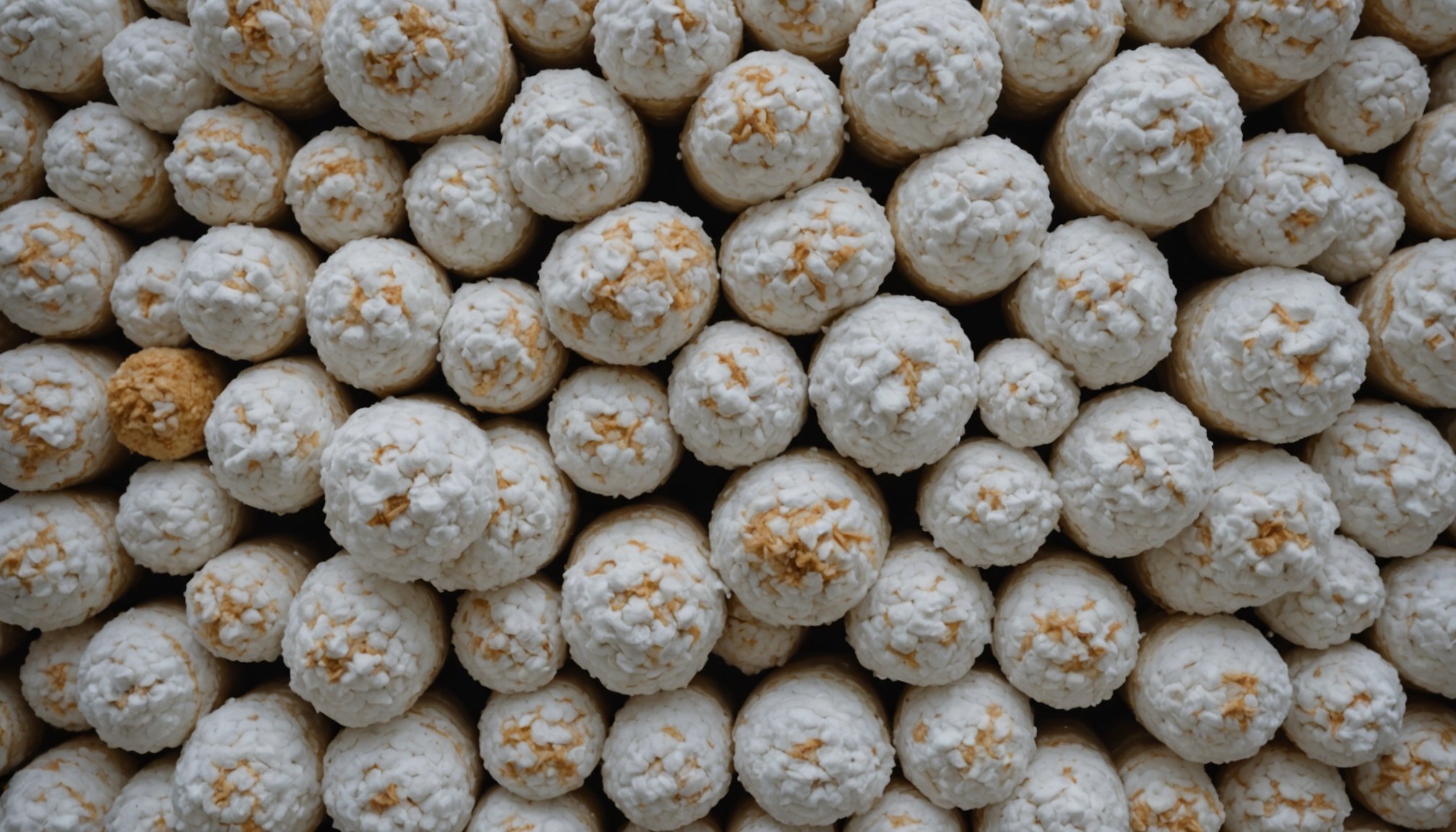Ultimate Guide to Sustainable Insulation Techniques for Peak Efficiency in the UK Climate
As the UK strives to achieve its net-zero carbon emissions goal by 2050, the importance of sustainable insulation in buildings cannot be overstated. Insulation is a crucial component in reducing energy consumption, lowering energy bills, and creating a more environmentally friendly built environment. Here’s a comprehensive guide to the latest sustainable insulation techniques, materials, and practices that can help you achieve peak efficiency in the UK climate.
Understanding the Importance of Insulation
Insulation is more than just a way to keep your home warm in the winter and cool in the summer; it is a vital step in reducing energy consumption and mitigating the effects of climate change. Buildings in the UK account for around 20% of the country’s total greenhouse gas emissions, making energy efficiency improvements in both domestic and commercial properties essential[2].
Topic to read : Mastering coastal real estate: key strategies and insights for navigating uk regulatory compliance
Energy Efficiency and Cost Savings
Proper insulation can significantly reduce energy bills by minimizing heat loss in the winter and heat gain in the summer. For instance, smart insulation systems can optimize energy consumption in real-time, leading to up to 20% more energy savings compared to traditional systems[1].
Environmental Impact
Sustainable insulation materials and techniques are designed to reduce the carbon footprint of buildings. For example, bio-based insulation materials like wool, hemp, and cellulose are biodegradable and offer excellent thermal and acoustic insulation while reducing reliance on synthetic materials[1].
Also read : Clever space-saving techniques for maximizing compact living environments
Innovative Insulation Materials
The insulation industry is witnessing a surge in innovative materials that are not only efficient but also eco-friendly.
Smart Insulation Systems
Smart insulation technologies use embedded sensors to monitor environmental variables and adjust thermal resistance dynamically. This real-time optimization significantly reduces energy costs and improves efficiency. These systems are particularly beneficial in modern buildings where energy efficiency is a top priority[1].
High-Performance Materials
Materials like aerogels and vacuum insulation panels (VIPs) are revolutionizing the insulation landscape. Aerogels, often referred to as “frozen smoke,” provide outstanding insulation despite being mostly air-based. VIPs offer excellent thermal resistance in small forms, making them ideal for thin, effective, and eco-friendly insulation solutions[1].
Natural and Bio-Based Insulation
Natural materials such as wool, hemp, and cellulose are gaining popularity due to their sustainability and performance. Wool insulation, for example, is inherently fire-retardant, recyclable, and offers advanced thermal and acoustic properties. It responds to environmental conditions like humidity and temperature, ensuring healthy buildings and occupants[1][3].
Practical Applications and Techniques
Implementing sustainable insulation techniques involves more than just choosing the right materials; it also requires careful consideration of the building’s design and existing infrastructure.
Wall Insulation
Wall insulation is critical in reducing heat loss. Here are some techniques and materials you can use:
- Cavity Wall Insulation: Filling the cavity between the inner and outer walls with materials like mineral wool or foam insulation can significantly reduce heat loss.
- External Wall Insulation: Adding an external layer of insulation to the building can protect it from winds, collect rainwater, and improve thermal and acoustic performance[4].
Roof Insulation
Roof insulation is another key area to focus on:
- Loft Insulation: Using materials like wool or cellulose in loft spaces can help retain heat in the winter and keep the home cool in the summer.
- Roof Insulation: Insulating the roof with materials such as foam insulation or mineral wool can prevent heat from escaping through the roof[4].
Floor Insulation
Floor insulation is often overlooked but is crucial for maintaining a warm and energy-efficient home:
- Underfloor Insulation: Insulating the space between the floor joists with materials like wood fibre or foam can help keep the home warm and reduce energy consumption[4].
Sustainable Retrofitting of Buildings
Retrofitting existing buildings with modern insulation systems can be technically complex and costly, but it offers significant long-term benefits.
Challenges and Solutions
- High Initial Costs: Advanced materials like aerogels and VIPs are cost-prohibitive for many projects. However, the long-term energy savings and reduced maintenance costs can offset these initial expenses.
- Scalability Issues: New technologies may face scalability issues, but manufacturers are working to make these materials more accessible and affordable[1].
Tips for Sustainable Retrofitting
Here are some tips for sustainable retrofitting:
- Thermal Insulation: Use eco-friendly thermal insulation materials such as wool, cellulose, or wood fibre to reduce heat loss.
- Window and Door Replacement: Replace old windows and doors with more airtight and energy-efficient ones to reduce heat loss.
- HVAC System Maintenance: Regularly maintain HVAC systems to improve their efficiency and reduce energy consumption[4].
Circular Economy and Recyclable Insulation Solutions
The insulation industry is moving towards a circular economy by developing recyclable materials and repurposing discarded insulation.
Recyclable Materials
Manufacturers are focusing on creating insulation materials that can be recycled and reused. For example, discarded insulation materials can be repurposed into new products, significantly reducing waste and supporting sustainability goals[1].
Hybrid Insulation Solutions
Combining traditional materials with innovative solutions like aerogels and cellulose can maximize both energy efficiency and cost-effectiveness. For instance, a hybrid wall element developed by Heidelberg Materials and Metsä Wood has a 30 to 50% reduced carbon footprint compared to conventional concrete sandwich components[1].
Case Studies and Examples
Real-world examples illustrate the effectiveness of sustainable insulation techniques.
Wool Insulation Wales
Wool Insulation Wales has developed a 100% British sheep wool insulation product called Truewool®, which is plastic and polyester-free. This material has advanced thermal and acoustic properties and is designed to respond to environmental conditions, ensuring healthy buildings and occupants. They are also developing a novel sheep wool panel with superior fire rating and low carbon footprint, set to launch in Q2 2025[3].
Decarbonising UK Housing
The UK government’s Future Homes Standard outlines strict energy efficiency and low-carbon standards for new homes from 2025. This includes the adoption of low-carbon heating solutions like heat pumps, which extract heat from the ground, air, or water to heat homes. These solutions are crucial in reducing carbon emissions and achieving the UK’s sustainability goals[5].
Comparative Analysis of Insulation Materials
Here is a comparative table of some common insulation materials, highlighting their thermal performance, eco-friendliness, and cost:
| Material | Thermal Performance | Eco-Friendliness | Cost |
|---|---|---|---|
| Aerogel | High | High | High |
| Vacuum Insulation Panels | High | High | High |
| Sheep Wool | High | High | Medium |
| Cellulose | Medium | High | Medium |
| Mineral Wool | Medium | Medium | Low-Medium |
| Spray Foam | High | Medium | Medium |
| Wood Fibre | Medium | High | Low-Medium |
| Expanded Polystyrene (EPS) | Low-Medium | Low | Low |
Practical Insights and Actionable Advice
Here are some practical insights and actionable advice for implementing sustainable insulation techniques:
- Conduct an Energy Audit: Before starting any insulation project, conduct an energy audit to identify areas where heat is being lost.
- Choose the Right Material: Select materials that are not only energy-efficient but also eco-friendly and suitable for your specific needs.
- Consider Smart Insulation: Invest in smart insulation systems that can optimize energy consumption in real-time.
- Maintain HVAC Systems: Regularly maintain your HVAC systems to ensure they operate efficiently.
- Retrofit Existing Buildings: Retrofitting existing buildings with modern insulation systems can be complex but offers significant long-term benefits.
Quotes and Expert Opinions
- “The insulation industry stands at a crucial point, balancing innovation with sustainability. Advanced materials, smart technologies, and bio-based options are transforming insulation’s role in energy efficiency and environmental stewardship,” – Persistence Market Research[1].
- “Improving the energy performance of buildings can contribute significantly to lowering energy bills for households, whilst decreasing the carbon output of the UK’s buildings and reducing overall energy demand,” – UK Government[2].
- “Sheep wool has been designed and tested over thousands of years. It has evolved to be one of the best insulating materials that there is,” – Ruth Marie Mackrodt, Wool Insulation Wales[3].
Sustainable insulation techniques are no longer just a niche interest but a necessity in the UK’s journey towards a net-zero carbon future. By embracing innovative materials, smart technologies, and circular economy practices, we can create buildings that are not only energy-efficient but also environmentally friendly. Whether you are building a new home or retrofitting an existing one, the right insulation can make a significant difference in your energy consumption, energy bills, and overall carbon footprint. As we move forward, it is crucial to continue innovating and adopting sustainable practices to ensure a greener and more efficient built environment for generations to come.

